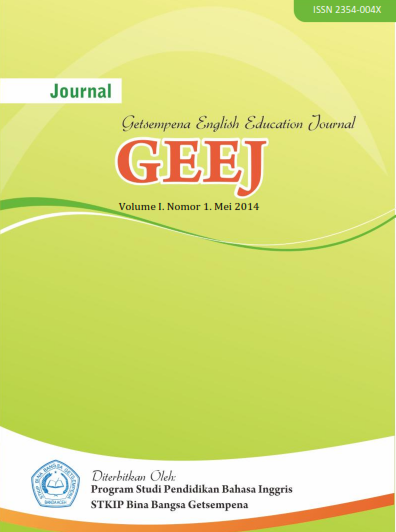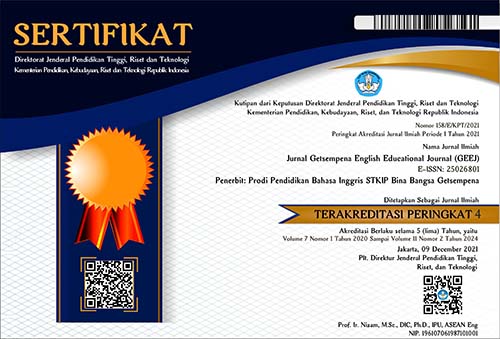THE IMPLEMENTATION OF VISUAL PRINTED MEDIA IN ENGLISH LANGUAGE TEACHING
Abstract
This study which was conducted at SD Islam Laboratorium Neuhen, Mesjid Raya is intended to figure out how the implementation of visual printed media in English language teaching to the six levels. The study was conducted case study research design. The population was 44 and the sample was taken by using nonprobability sample that is convenience sampling was 22 students and 1 English teacher. The research problems are: (1) what kinds of visual printed media are used by the teacher in teaching English? (2) how does the teacher implement visual printed media in teaching English? (3) what are the obstacles faced by the teacher in teaching English by using visual printed media The data were collected by using instruments, namely: observation checklist sheets, interview guidelines, and documentations. Based on the data analysis, it was found that (1) the English teacher at SD Islam Laboratorium used book, magazine and newspaper as printed media. (2) the teacher did three phases in using visual printed media. They are: (a) preparation; learning curriculum and syllabus, the teacher matches the basic competences with appropriate visual printed media, preparing the visual printed media, bring the media to the class, recognizing the types of the students (b) core activity; students’ question about media, student-centered in learning process while using media, good interaction in using visual printed media, cognitive-affective-psychomotor of the student in using visual printed media (c) closing; summarization of using visual printed media, motivation/moral value of using visual printed media, giving homework. In addition the teacher did positive performance in using visual printed media (3) some difficulties faced by the teacher in the implementation of visual printed media in English language teaching, they are: designing lesson plan and preparing appropriate teaching materials as visual printed media. So, it is suggested that English teacher should use the visual printed media, because they are the effective tools in English teaching-learning process.
References
Bodgan, R.C, Biklen, S.K. (1998). Qualitative Research for Education. USA: Allyn and Bacon.
Brown, H.D. (2001). Doing Second Language Research, USA: Oxford University.
Cohen, L. Manion, L. & Morrison, K. (2005). Research Methods in Education (5th ed). London & New York: Routledge Falme.
Harmer, J. (2007). The Practice of English Language Teaching. 4th Edition. New York: Longman
Heinich, R. Molenda, M. Russell, J.D, & Scnaldino, S.E. (1996). Intructional and the New Tecnologies of Instruction. New York: Macmillan
Kasbolah, Kasihani. (1995). Instructional Media for Young Learners of EFL. ELE. I Malang: IKIP Malang.
McGLothin, J. Doug. (1997). A Child’s First Step in Language Learning. Retrieved on Thursday, May 05, 2011 at 8am. From http://iteslj.org.
Onasanya, S.A. (2004). Selection and Utilization of Instructional Media for Effective Practice Teaching. Institute Journal of Studies in Education Vol. 2 No. 1 June 2004, ISSN 0795-2199
Richards, J. and T. Rodgers. (1986). Approach and Methods in Language Teaching. Cambridge: Cambridge University Press.
Ruis, Nuhung. Muhyidin. Waluyo, Tri. (2009). Instructional Media. Jakarta: Ministry of National Education.Sadiman et al, (2010; 14)
























